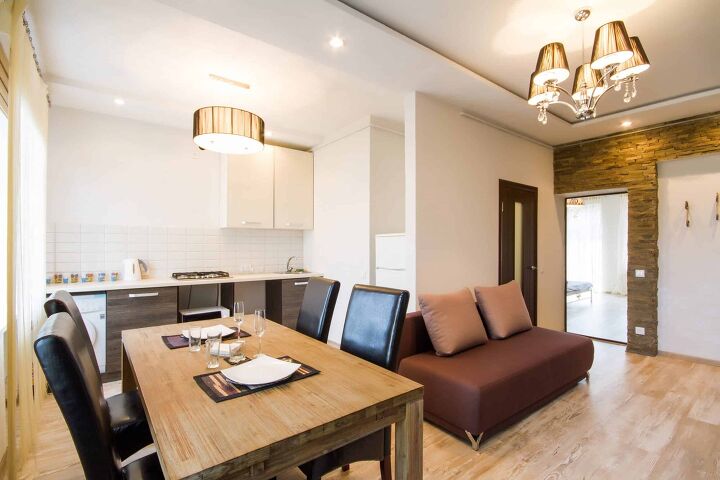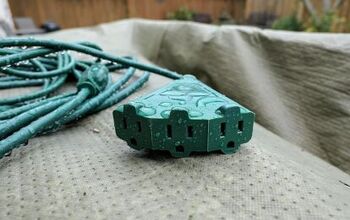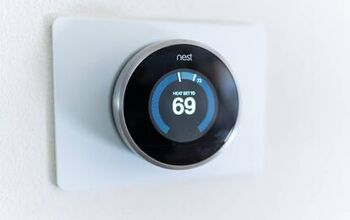3000K Vs. 4000K: Which Type of Lighting Is Right For My Home?

Choosing between lights is about more than price, ease of installation, and availability. More than anything, you need to consider the color temperature and the mood that it can evoke. Two of the most popular light color temperatures are 3000K and 4000K, so how do they differ?
Warm white color temperatures such as 3000K produce a comfortable mood and are ideal for bedrooms or living rooms. A garage, office, or workshop can benefit from a 4000K light because they produce blue-ish, bright, cool light. Generally, 3000K lights promote calm and sleep whereas 4000K lights promote focus and productivity.
It is difficult to choose between a 3000K light and 4000K until you understand light color temperature. Different color tones create different moods and have unique practical uses. Follow along as we explore the difference between 3000K and 4000K lights.
Do You Need to Hire an Electrician?
Get free, zero-commitment quotes from pro contractors near you.

Light Color Temperature
Lighting temperature refers to the color and feel of light measured against the light produced by a metal object heated to a temperature on the Kelvin (K) scale. Modern LED lights display their temperature in terms of CCT(correlated color temperature).
Lighting temperature typically comes between 2000K to 10,000K. However, household lighting temperatures range between 2,700K and 4000K. Generally, 2700K is very similar to 3000K but slightly more yellow; therefore, you will likely not notice the difference.
3000K and below are considered warm white lighting whereas 4000K is considered bright white as it contains more blue light. Each color light temperature varies in terms of mood, practical use, and style.
3000K
Warm white, or 3000K lighting, provides warm yellow-white that can create an old halogen look. The warm tones in a 3000K light compliment wood and dark or warm walls and floors. You can use 3000K lights in a room with a lot of white, but the warm light will clash and it won’t look great.
The light from a 3000K light isn’t entirely yellow, but it lacks the blue-ish tones that cool lights offer. That is part of why homeowners often choose 3000K lights for a rustic room with lots of wood or brown tones. However, 3000K lights are versatile and can complement many styles and colors because it is on the mild side of warm white tones.
You still get more white from a 3000K light than you would from incandescent lights. The light and color tone from a 3000K light is a cross between natural light and classic halogen bulbs. Warm white light from 3000K lights is known to stimulate melatonin, and that is why they are great for a bedroom or relaxing space.
4000K
The main benefit of a 4000K light is that they produce bright, clean, cool white light. A 4000K light produces a cool light that is bright but doesn’t strain your eyes. You can commonly find 4000K in kitchens or living rooms with a lot of white.
The cool, blue-ish bright light that 4000K lights produce does not resemble the warm tones from a 3000K light. Offices and stores generally use 4000K lights because they create a sterile, bright environment. Choose 4000K lights for rooms with plenty of white surfaces that the bright light can reflect off of.
This can help to maximize the efficiency of your lights and make the space more welcoming. Otherwise, you can use 4000K lights as transition lights in hallways or between a room with cool tones and one with warm tones.
5000K
Homeowners generally only use 5000K lights for security reasons. That is because they produce an overwhelmingly bright light that can be uncomfortable to look at for too long. The light from a 5000K light is most similar to daylight, and it can strain your eyes over time.
You can typically find 5000K lights in parking lots and garages where they can illuminate a large space. Music venues and industrial lots also utilize 5000K lights, but you don’t often find them at homes. However, you can certainly install 5000K lights outside of your home to improve your security.
| Temperature Color | 3000K | 4000K | 5,000K |
| Appearance | Warm White | Cool White | Daylight |
| Feeling | Cozy | Vibrant | Invigorating |
| Best Uses | Living Room, Bedroom | Garages, Work Areas, Bathrooms | Security Lights |
Is 3000K Better Than 4000K?
3000K light is better than 4000K light if you want to create a relaxing environment. However, some homeowners prefer cool, blue-ish light and that may be your ideal environment. Choose 3000K light if you want warm tones for your living room or bedroom, and choose 4000K light for kitchens, offices, and workspaces.
You aren’t limited to one option and can use 3000K lights to accent 4000K lights. Workspaces benefit from 4000K lights because they are known to increase alertness. You can achieve the best of both worlds if you install a main overhead 4000K light and smaller fixtures with 3000K lights.
That way, you can switch between the bright cool light and yellow-ish warmth or use them in conjunction. Neither light is better than the other, they are just simply better for different situations.
Utility
The most useful type of light is 4000K and 5000K lights. Granted, 4000K lights are more practical for utility use than 5000K lights. That is because you can use 4000K for casual home use or work purposes. A 5000K light may be useful in a garage, but you will grow tired of it quickly if you use it for work.
However, 4000K lights strike the perfect balance between comfort and brightness for work. You can use 3000K lights for utility purposes, but they are too warm and comfortable to promote productivity. Warm white tones don’t generally illuminate a workspace enough compared to cool, bright whites.
Mood
The difference in mood between a 3000K and 4000K light is substantial. Bright 4000K lights create an attentive and vibrant mood. Warmer 3000K lights create a more relaxed mood that is conducive to cocktail hours and binge-watching your favorite show.
Light tone doesn’t determine the mood of a room entirely, but it’s a great way to enhance it. Homeowners typically pair 3000K lights with darker woods to create a consistent mood throughout the room. Pair 3000K lights with rustic, warm room décor and pair 4000K lights with bright, simple paint or furniture.
Health
Light and color tones affect your health just as much as they affect your mood. Brighter tones that 4000K and 5000K lights can strain your eyes and cause irritation or headaches. However, that is the tradeoff for the alertness that they provide which also directly affects your health.
Warmer tones from 27000K and 3000K lights stimulate your brain to produce melatonin. Melatonin can induce calmness and help regulate your sleeping schedule. Lights that exceed 4000K can suppress melatonin production which can make it harder to relax or sleep at night.
This doesn’t mean that 4000K lights are bad for you, but 3000K lights are better for your sleep schedule. A healthy sleep schedule affects everything from your mood and appetite to heart health and blood pressure. Install 3000K lights strategically throughout your home to promote restful and positive sleep.
Consider Dimming
Unfortunately, artificial lighting doesn’t shift throughout the day as the sun does. The tunable function on many lights allows you to dim to the light to adjust the tone. These knobs allow you to toggle between a variety of color temperatures to customize the lighting to your desires.
Use dimmers whenever possible to get the most out of your light’s dynamic range. Having the ability to dim lighting can instantly transform your living spaces. Dimming light is a great way to change the mood and tone quickly without changing the lighting setup too much.
Summing It Up
Generally, 3000K lights are ideal for living rooms and bedrooms, whereas 4000K lights are ideal for workspaces. You get a warm white tone with subtle shades of yellow from a 3000K light. The blue-ish white glow of 4000K lights promotes alertness but they aren’t ideal for healthy sleep patterns.
It is possible to use 3000K and 4000K lights together, but 4000K lights rarely look good in rooms with dark wood tones. A 3000K light can stimulate melatonin production and make it easier to fall asleep at night. The warm light tone goes perfectly with wood and earthy tones.
Homeowners typically use 4000K lights in a garage, kitchen, workspace, or room with lots of white. Install 4000K lights to bounce cool light off of white surfaces to brighten the space. Both lights are useful and there is no reason why you can’t use both 3000K and 4000k lights together.
Related Guides

I am a writer who enjoys working on home improvement projects. My husband was in the navy, so we moved frequently. This gave me many opportunities to fix up new places. In my spare time, I enjoy reading mysteries and hiking.
More by Lisa Borga












![10 Best Electric Lawn Mowers - [2022 Reviews & Top Rated Models]](https://cdn-fastly.upgradedhome.com/media/2023/07/31/9070486/10-best-electric-lawn-mowers-2022-reviews-top-rated-models.jpg?size=350x220)

![How Much Weight Can a 4×4 Support Horizontally? [It Depends!]](https://cdn-fastly.upgradedhome.com/media/2023/07/31/9070333/how-much-weight-can-a-44-support-horizontally-it-depends.jpg?size=350x220)












